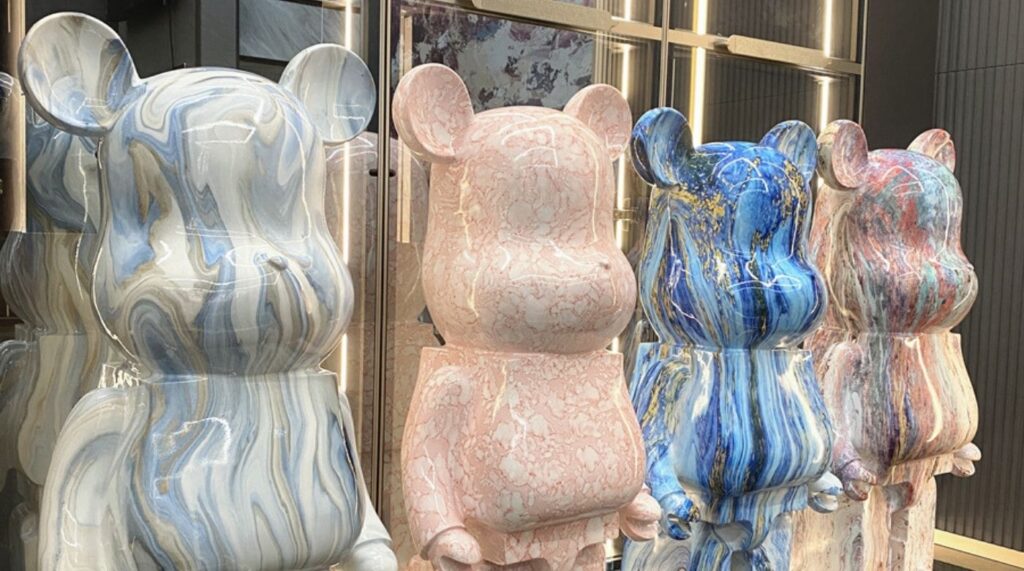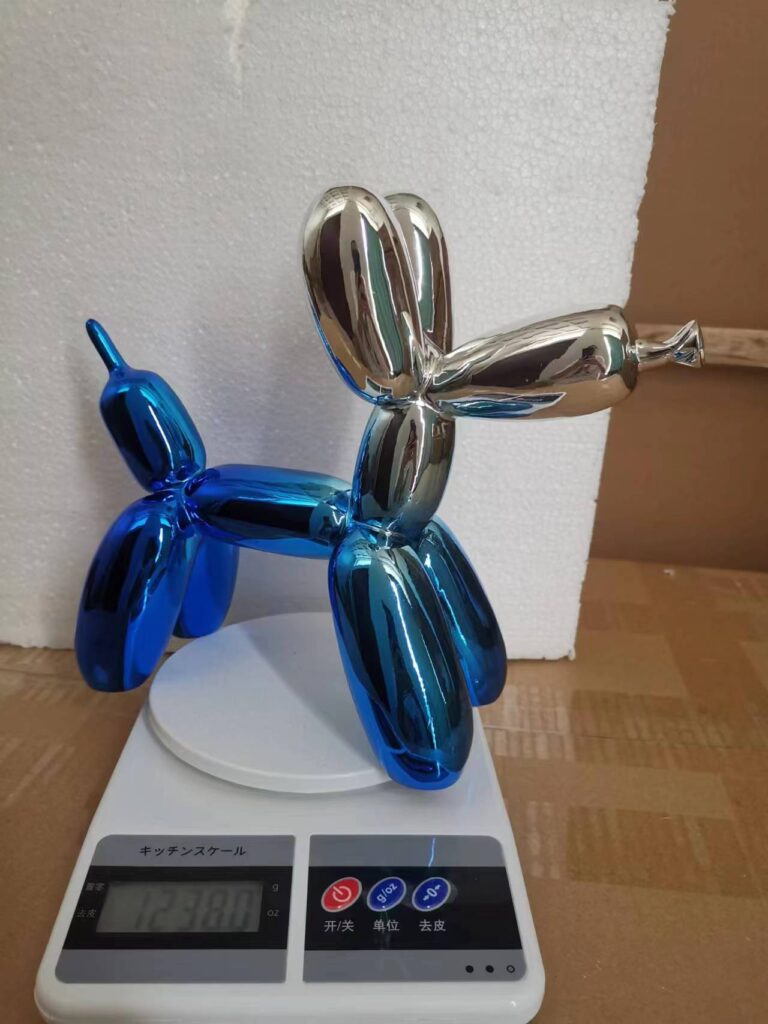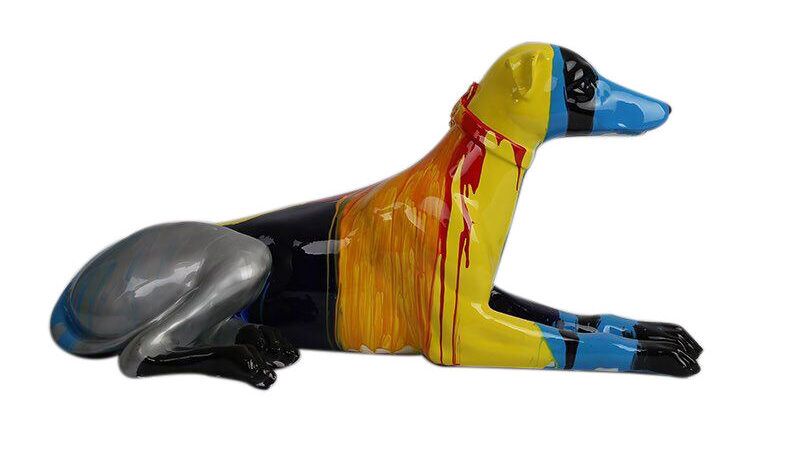As a Chinese manufacturer of resin sculptures for home decor, we recognize the importance of surface treatment in the manufacturing process. Precise surface treatment techniques can enhance the visual appeal, texture, and durability of the sculptures, helping your brand to stand out in a competitive market. In this article, we will share our knowledge of common surface treatment techniques for resin sculptures used in mass production, from a Chinese supplier’s perspective. These techniques include glass pasting, water transfer printing, electroplating, painting, resin drip-painting, and fluorescent coloring.
Glass Pasting Technique
Advantage: glass pasting technique can add a sense of luxury and a pearlescent effect to resin sculptures, creating a dazzling sparkling effect when exposed to light. This effect is even more pronounced at night or under lighting, making the entire sculpture more eye-catching.
Disadvantages: The 100% hand-made process is time-consuming and unsuitable for producing in batches, which leads to high production costs. Improper handling may result in surface scratches and detachment of the glass.
Spray Painting Technique
Advantage: the spray painting technique is able to produce home decor resin sculptures with different colors and patterns, which are vibrant and eye-catching. In addition, the spray painting technique provides an additional protective layer for resin sculptures, preventing damage from external factors.
Disadvantages:
- Susceptible to environmental factors: spray painting must be carried out in a relatively dry, warm, dust-free, and windless environment; otherwise, problems such as uneven coating, bubbles, or peeling may occur.
- Difficulty in controlling coating quality: it’s challenging to control the thickness, glossiness, and color of spray coatings, which may result in inconsistent coatings for the same batch of products.
Electroplated Resin Technique
Advantages: The electroplating resin process can create a highly refined metallic appearance and evoke a sense of high-end luxury, making it popular among consumers.
Disadvantages: electroplating resin production requires high technical expertise in pre-processing, electroplating, and post-processing. Poor pre-processing can impact the overall texture and visual effect, requiring skilled workers to ensure product quality and stability. Both manual and machine operations are available, depending on the order quantities. We use manual operation for small-scale production, while machine operation is more efficient and precise for large-scale production.
Water Transfer Printing
Advantage: water transfer printing is a technique that transfers patterns from printing paper to the surface of resin sculptures through water pressure and temperature. It can produce fine and intricate patterns and has the advantages of cost-effectiveness, durability, environmental friendliness, and strong operability.
The disadvantage is that the patterns on each product are inconsistent.
Resin Drip Painting
Resin drip painting is a decorative technique in which different colored liquids are poured onto the surface of a sculpture and manipulated to achieve a gradient effect and even distribution. The main advantage of this process is that it can create home decor resin sculptures with unique color effects that are difficult to achieve using traditional production methods.
Disadvantages:
- Color effect difficulties: the color effect of the resin drip painting mainly depends on the mixing ratio and pouring method, requiring a high level of technical skill and experience to control the color distribution and transition effect.
- Limited production capacity: resin drip painting usually requires manual operation, limiting production capacity. Compared to other automated production processes, the pouring process is relatively slow.
- High cost: due to the high level of technical skill and longer production time required, the resin drip painting process is relatively expensive. This also makes it impractical for large-scale production.
- Not suitable for complex shapes: since the color effect of the resin drip painting process is formed by pouring, it requires a certain shape and surface texture of the product. It is difficult to achieve ideal effects for complex shapes and surface textures using the pouring process.
Fluorescent Coloring
Fluorescent coloring is a process in which a coating containing fluorescent pigments is applied onto the surface of a resin art piece. This technique produces a fluorescent effect when exposed to ultraviolet light and is often used for warning and ornamental purposes.
Advantages: create a unique color effect that catches the eye and has a warning effect when exposed to ultraviolet light.
Disadvantages: the fluorescent effect is affected by the intensity of the ultraviolet light, so it may not be as visible in darker environments, limiting its application. The addition of fluorescent pigments to the resin material can decrease the hardness and durability of the finished sculpture compared to ordinary resin materials.







2 Responses